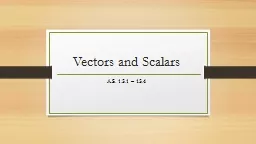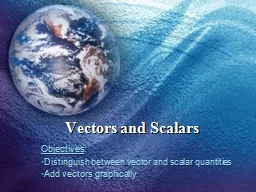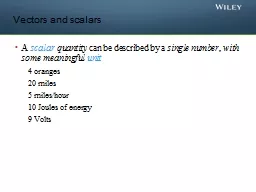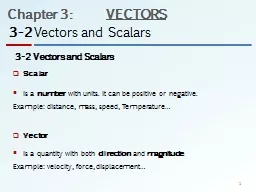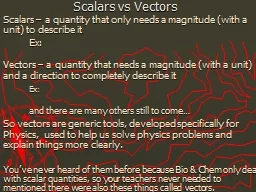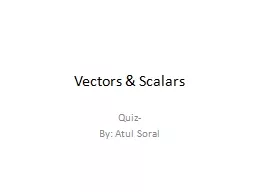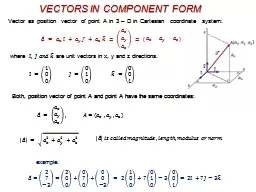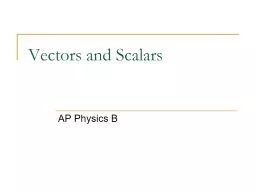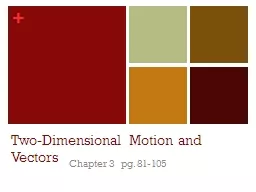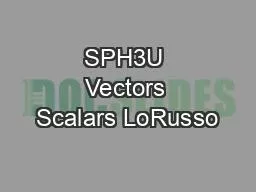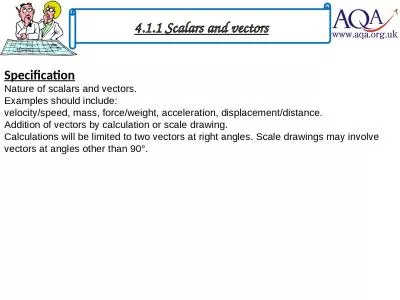PPT-Vectors and Scalars
Author : mitsue-stanley | Published Date : 2016-07-08
AS 131 134 Scalar Quantities Those values measured or coefficients that are complete when reported with only a magnitude Examples the table is 25 m long He ran
Presentation Embed Code
Download Presentation
Download Presentation The PPT/PDF document "Vectors and Scalars" is the property of its rightful owner. Permission is granted to download and print the materials on this website for personal, non-commercial use only, and to display it on your personal computer provided you do not modify the materials and that you retain all copyright notices contained in the materials. By downloading content from our website, you accept the terms of this agreement.
Vectors and Scalars: Transcript
Download Rules Of Document
"Vectors and Scalars"The content belongs to its owner. You may download and print it for personal use, without modification, and keep all copyright notices. By downloading, you agree to these terms.
Related Documents

